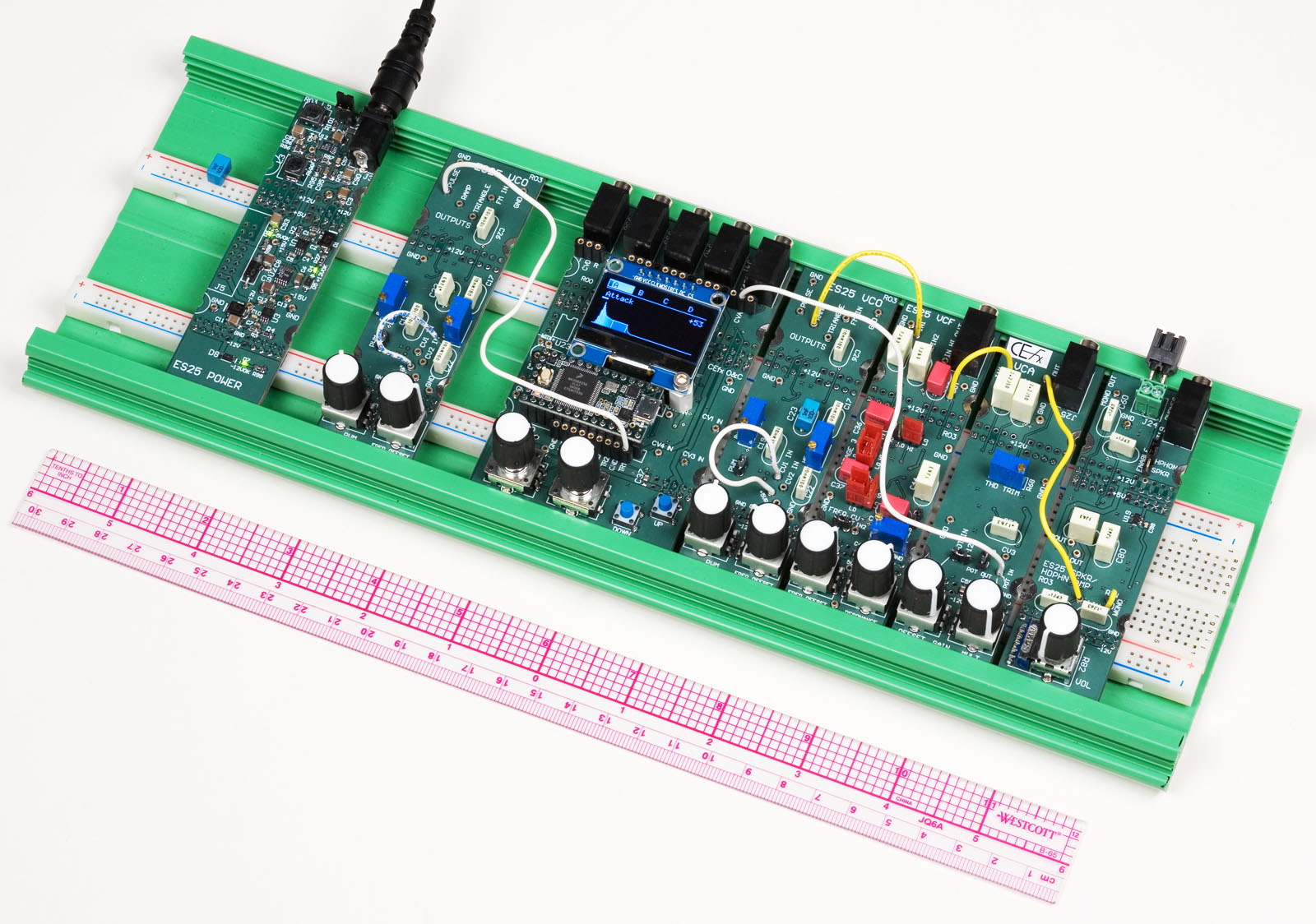

 Loading product data...
Loading product data...
The o_C module allows you to select one of 12 (as of this writing) CV applications stored in the firmware. Each application performs some control voltage processing or generation function (for example the CopierMaschine application is an Analog Shift Register (ASR), Sequins is a dual channel sequencer, etc). Applications are selected and configured using the OLED display, rotaray encoders, and up/down push buttons. The o_C user manual gives full details of all the applications and configuration options.
You can purchase this CEfx module with or without the Teensy processor. You can order it without the processor if you prefer to supply your own Teensy 3.2 board and connection headers. If you order this module with the processor the Teensy will have headers installed and current o_C firmware already loaded.
As with all CEfx boards, this module uses hookup wire/jumpers to connect inputs and outputs to other CEfx modules or breadboard contact points. As a convenience we can install (5) 3.5mm jacks which are uncomitted (e.g. have no connection by default). A pin block below each jack allows you to wire the tip and the ring of each jack to anything including CV outputs, trigger inputs, etc.
The firmware applications (as of this writing) include:
| CopierMaschine | Analogue shift register (ASR) |
| Harrington 1200 | Triad (three note chord) progressions |
| Automatonnetz | Vector sequencer |
| Quantermain | 4 channel quantizer |
| Meta-Q | 2 channel quantizer |
| Quadraturia | Quadrature wavetable LFO with tap tempo |
| Low-rents | Lorenz attractor modulation generator |
| Piqued | Quad envelope generator |
| Sequins | 2 channel sequencer |
| Dialectic Ping Pong | Bouncing ball envelope generator |
| Viznutcracker | Bytebeats signal (noise) generators |
| Acid Curds | Chord sequencer |
| References | Tuning utility |
This shows the o_C module in a CEfx system containing a power module, two VCOs, a VCF, VCA, and Speaker/Headphone module:

Refer to the o_C web site for more info, including a user manual.
Other than the placement of the up/down switches, the look and feel of the CEfx version is identical, right down to the choice of rotary encoders. The big difference is the input-output connections. As with all CEfx modules, the primary connection technique is with hookup wire or test jumpers.
Inputs/Outputs
Between the knobs and the teensy,there is a row of pin sockets. The sockets are labeled TR1, TR2, TR3, and TR4 are for the trigger input signals.
To the right of the Teensy, are four sockets labeled CV1 IN, CV2 IN, CV3 IN, and CV4 in. These are for the control voltage inputs.
Finally, along the top of the module, directly below the audio jacks (if installed) there is a row of pin sockets arranged as five groups of three sockets. Output control voltage "A" is the middle pin of the rightmost group. CVB is the middle pin of the next group to the left. CVC is the middle pin of two groups the left of the CVB group (we skip the middle group). CVD is the middle pin of the leftmost group.
The audio jacks are there as a convenience to connect the o_C module (or other CEfx modules) to external hardware. There are five uncommitted jacks. For each jack, the "TIP" connection is brought to the leftmost socket of each group directly below each jack. The "RING" connection goes to the rightmost pin. The middle pin is one of the four output control voltages. You can connect any of the jacks to any of the CV or trigger signals with a length of 22AWG solid hookup wire, or a test jumper.
